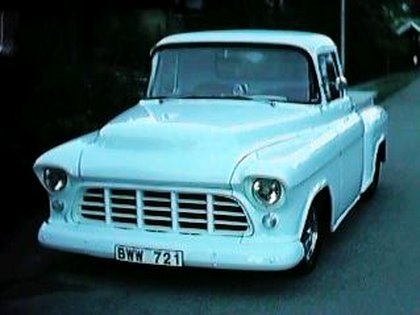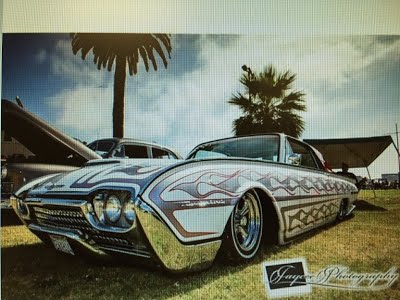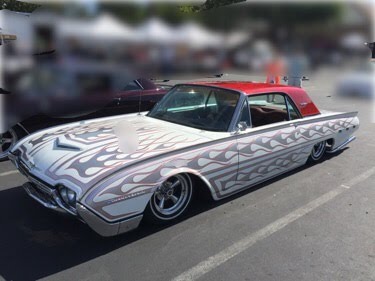Barn Find 1932 Ford Roadster Hidden for 60 Years
You would think with all the car collectors and automotive prospectors out there scouring the world's barns, garages, storage sheds, fields, and the like for hidden automotive treasure, that the supply of "barn find" cars would, at some point, dry up.
Maybe so, but as this car proves, they are still out there.
And unlike some of the "barn finds" we hear about these days that really aren't—Mom's old Mustang that's been in the garage since the 1980s doesn't count—this '32 standard roadster was found in an actual barn, parked since 1955.
"It's amazing to find a '32 roadster at all, but to find one like this," said Mike McGrath, who with his father, Bill, are the car's current caretakers.
If you're into old Fords, you likely know the McGraths as the proprietors of the Early Ford Store in Southern California's picturesque San Dimas. They live and breathe FoMoCo products from the 1920s to the late 1950s and knew exactly what they were looking at when they first laid eyes on the roadster.
Mike's "like this" comment describes the old Ford on several levels. That it's a Deuce roadster makes it the Holy Grail for many hot rodders. It's also an early '32 roadster, with details that "real sickos," as Mike described himself, will just geek out over. It has the early single-finger-hold hood hooks, for example, very desirable pieces for period-correct rod builders. "We just sold a set like them for $700," Mike says. It also has early doors, with extra holes to attach the side curtains.
The curtains and the top are original. "They've never been off, I'm sure," Mike states. "They're bolted to the doors, and you couldn't get them off if you wanted to."
The leather upholstery, or what's left of it, is original, too. The car's hot rod roots show in the old Stewart-Warner gauges in the dash. It also has a gasoline-fueled Southwind heater under the dash, and a Firestone aftermarket radio, something Mike says he's never seen before.
"Like this" also describes what is a largely intact car. Though it was a hot rod back in the 1940s, it was a mild one. Its fenders are still on; and though the cowl vent is filled, the grille shell is not. The grille is still topped by the '33 Ford pickup radiator cap visible in old photos of the car. The front axle and rearend are "bone stock," Bill says. The windshield stanchions are unchopped, though they have been rotated to allow the windshield to lay back some. That change, plus the laidback top bows, gives the roof line a chopped look.
The photos of the hot rod "when it still shined," as Bill describes it, show the car with a four-banger under the hood, topped by a pair of two-barrel carbs. At some point in its life, the roadster was upgraded with a bunch of parts from a '39 Ford, including its hydraulic brakes, transmission, pedals, taillights, and even the horns underhood. The engine in it now is a 59A flathead, too new to have come out of the donor '39 but probably transplanted at the same time.
"It's free, it turns, the oil in it is clean, and it'll likely start, though we haven't tried to yet," Mike says about the flathead.
The roadster also exhibits some clues to its use prior to going into Rip Van Winkle mode. It lived on a ranch in Eureka, a rural town along Northern California's coast. A crude angle-iron bumper hitch is fixed to the back, likely used to tow a trailer hauling wood, dirt, or other ranch debris. The tailpanel below the rumble seat lid was cut out of the body, and the rumble seat removed, making more room to haul some sort of payload.
The McGraths have the 1946 pink slip the Eureka rancher got when he bought the car. The roadster still wears its license plates, the rear one showing a 1955 tag—the last time it was registered.
That the car had outlived its usefulness to the rancher is evident on a note written on the bill of sale he gave to the man who took possession from him: "Vehicle given to new owner for disposal."
That new owner was Ron Cochran, a Central California collector who had heard of the car and became its new owner in 2015. As it turned out, he was a customer of the McGraths, "and he knew we'd be really into it," Mike says. "We're appreciative that he called us. He knew it's junk we like."
Freeing the car from its 60-year hibernation was quite a chore. "Took us all day," Bill remembers. The tires were a ruin and the brake shoes locked solid, so there was no rolling it. "We used a forklift with 10-foot forks," Bill says. Once they got the car to their shop, they took the wheels off and found the brake drums so full of mud they had to use hammers to knock the gunk out. Remarkably, though, "the brake shoes were brand new," Mike says. "You wouldn't even need to reline them."
The roadster now sits on wheels the McGraths had in the shop "with tires good enough to roll," Bill says.
Is a restoration in the car's future? No. "I wouldn't want to restore it," Bill says. "I want to enjoy it as it is." Mike even joked—we think it was a joke, anyway—about misting the car with hairspray before they displayed it at the Grand National Roadster Show—where we first saw it, in the Suede Palace—so passersby wouldn't rub off the dirt accumulated on the sheetmetal's crusty surface.
As luck would have it, within two weeks of buying the roadster, the McGraths bought another survivor Deuce, this one an unchopped three-window that was last registered in 1954 and has been garage-bound since 1961. "It's a perfect body, the nicest I've ever seen," Bill says. Evidence of its hot rod past shows up in a white Naugahyde roof insert and chromed window frames. Mike believes it was parked during the middle of an OHV conversion that was never finished.
That car is currently blown apart, and the father-son team hopes to display it at next year's GNRS. It paired with the roadster in arrested decay would make quite the showstopper.
The Source
We've lost count of how many car stories we've printed that have mentioned the Early Ford Store as the source for some hard-to-find part or another. Once you've been to the store, you'll see why, as it is literally stacked floor to ceiling with a remarkable assortment of original, N.O.S., and reproduction Ford parts. The car-part inventory spans model years from 1928 to 1959; truck parts run all the way up to 1972.
"We have everything but upholstery," Mike says. He estimates there are 8,500 reproduction parts listed on the company's website (earlyfordstore.com) and some 10,000 stocked in the store. Those numbers don't include the vintage parts. "We have storages full of used parts all over."
The building that houses the store couldn't be more apt: Built in 1910, the San Dimas Garage became the town's first Ford agency in the 1920s. It was later home to two Ford dealerships, Bill Knapp Ford and Liberty Ford, before the McGraths moved in nearly 20 years ago.
The business caters to restorers and hot rodders alike. Not far away from stock fenders, grilles, and window frames hung in the rafters is a cabinet topped with a row of very rare Thickstun intake manifolds, capped at one end by an Italmeccanica flathead supercharger. The blower dates to the time before the Supercharger Company of Turin bought the tooling and put its S.Co.T. name on it.
"We are always buying and selling hard-to-find 1928-1959 original parts," Mike says. "And we buy beat-up '32 roadsters, too."



















































































